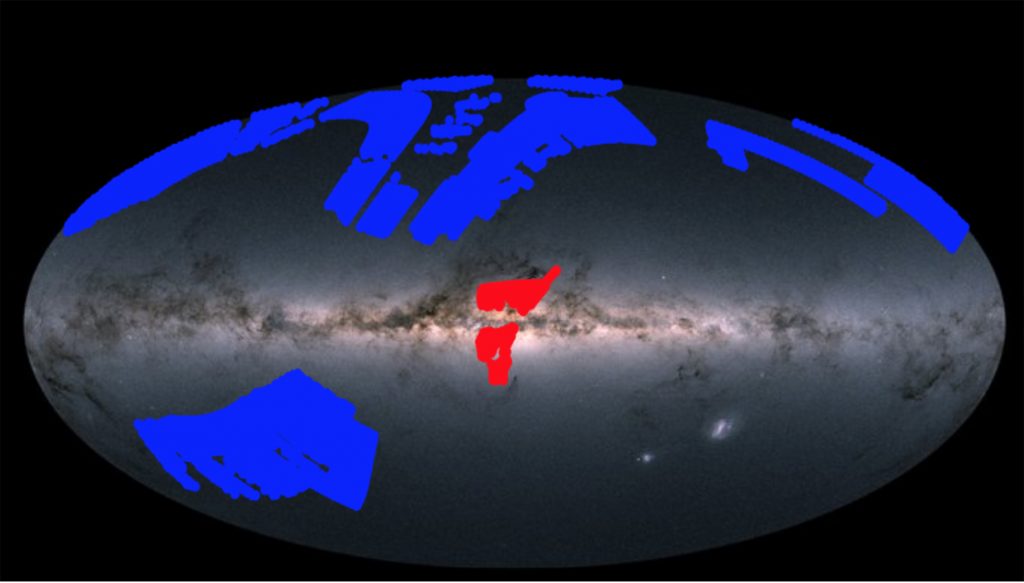
Researchers at EPFL’s Laboratory of Astrophysics are part of an international consortium of scientists that have designed a new method of conducting an exhaustive view of the oldest and most metal-poor stars in the Milky-Way
The science of observational cosmology involves the study of the structure and origin of the Universe. It can be conducted by looking far into the Universe but also by targeting and characterizing the most ancient stellar populations in our neighborhood. These stars are notably missing many of the chemical elements that are present in the subsequent generations of younger stars and are called extremely metal-poor stars. They have very specific chemical signatures, providing an imprint of the very first stars in the Universe.
Despite many advances in technology, scientists still lack a clear view of these first systems which form the skeleton of the early Galaxy.
The Pristine survey is the result of close collaboration between an international team of scientists, including Prof. Pascale Jablonka, Carmela Lardo, Nicolas Longeard, and Romain Lucchesi of EPFL’s Laboratory of Astrophysics.
Pristine is an imaging wide field survey in the Northern Hemisphere of such ancient and metal-poor stars in the stellar halo of the Milky Way, using a new narrow-band filter which efficiently selects this rare population.
This massive survey of the night sky has now covered a total of 6,000 deg2. It is completed by large spectroscopic campaigns that provide detailed analyses of the chemical elements present in each star.
New imaging techniques
The team has designed the largest and most efficient survey of the stellar halo, using a new filter on the MEGACAM large field of view camera of the Canada France Hawaii telescope (CFHT). As such, Pristine will produce the most unbiased photometric metallicity distribution of the metal-poor Galactic halo, an important concept in stellar evolution.
Speaking at the annual gathering of the team at the International Space Science Institute (ISSI) last week in Berne, Switzerland, Prof. Jablonka, who is also the co-founder of the Pristine survey, commented:
“The scale of the Pristine survey is enormous but has been made possible by the excellent level of partnership between members from different countries. Once complete, the survey will completely change the observational landscape of near-field cosmology and provide a crucial step forward for our quest to understand galaxy formation”.
A companion survey, targeting the Milky Way dwarf satellites in the Northern Hemisphere has been designed with a similar strategy to derive accurate dynamical masses of these objects, and to conduct robust comparisons with the Milky Way halo. These dwarf galaxies are the relics of the building blocks of more massive ones. This program contributes to our understanding of galaxy evolution and nature of the Dark Matter.
Looking for the imprints of the first stars in the Universe